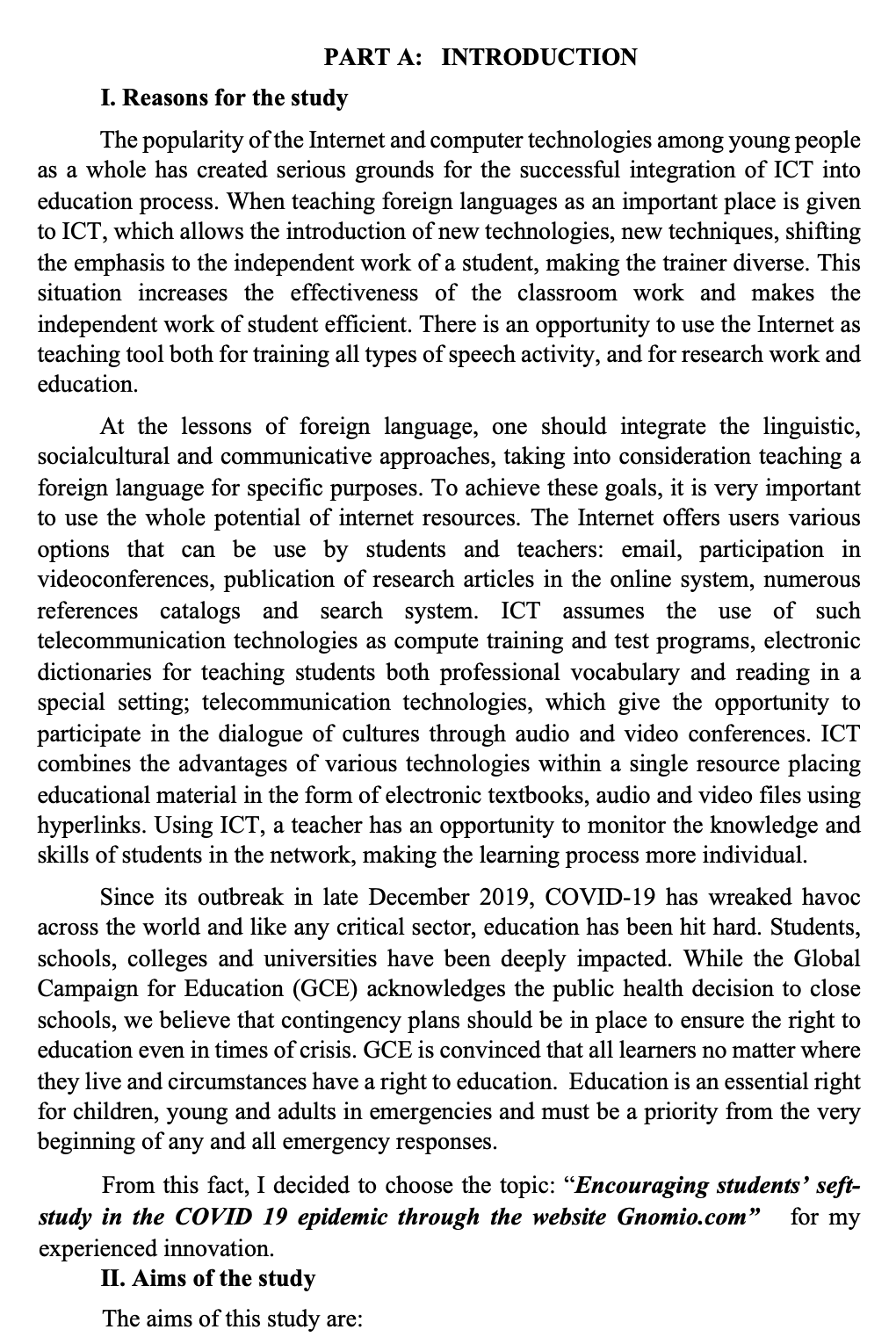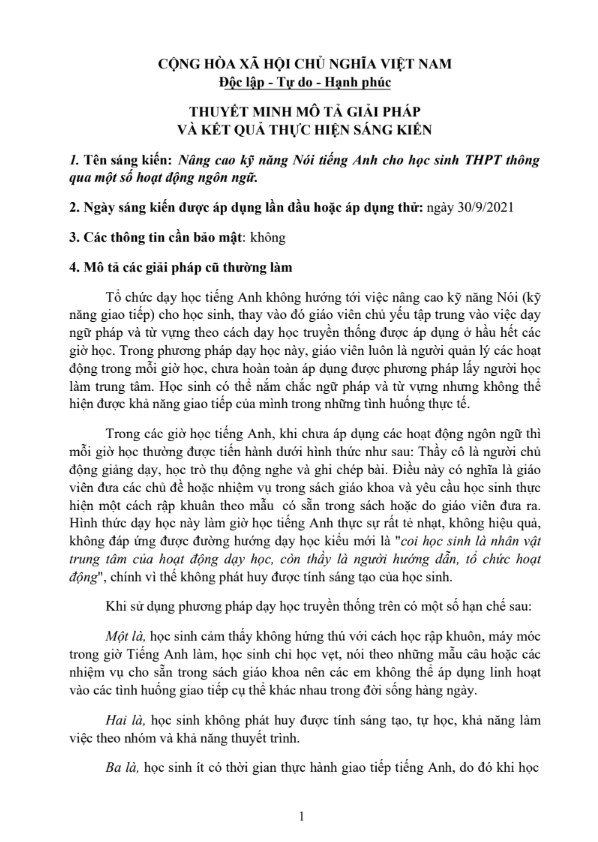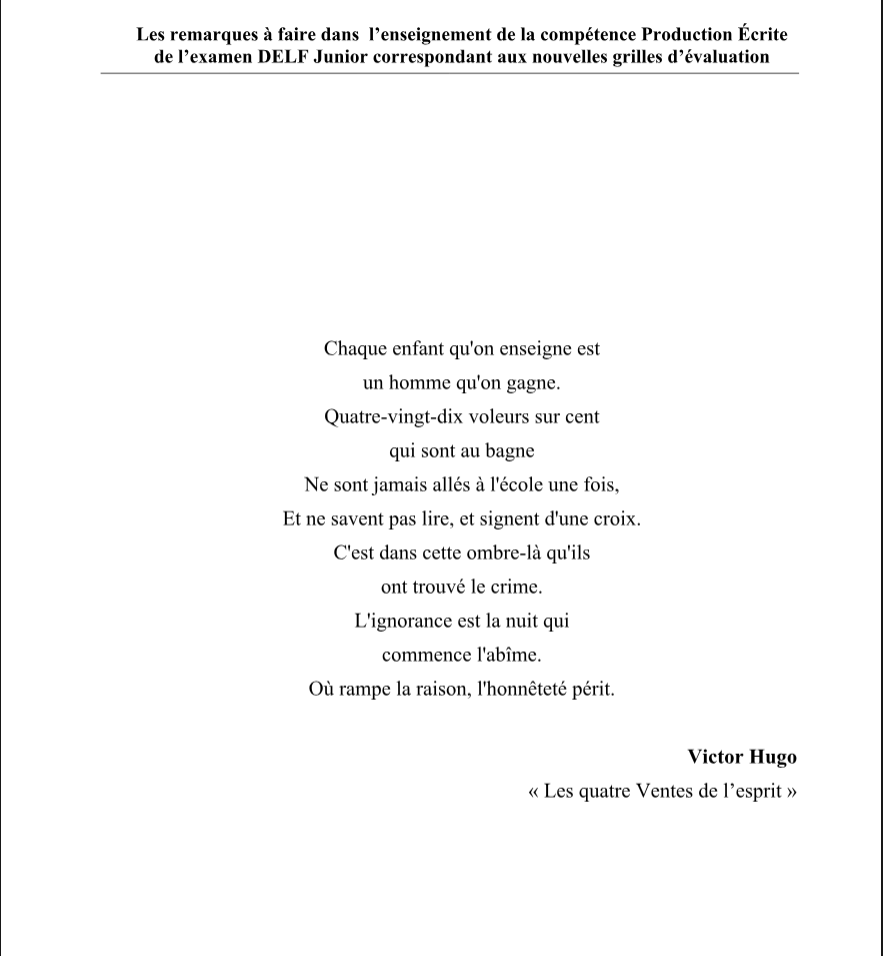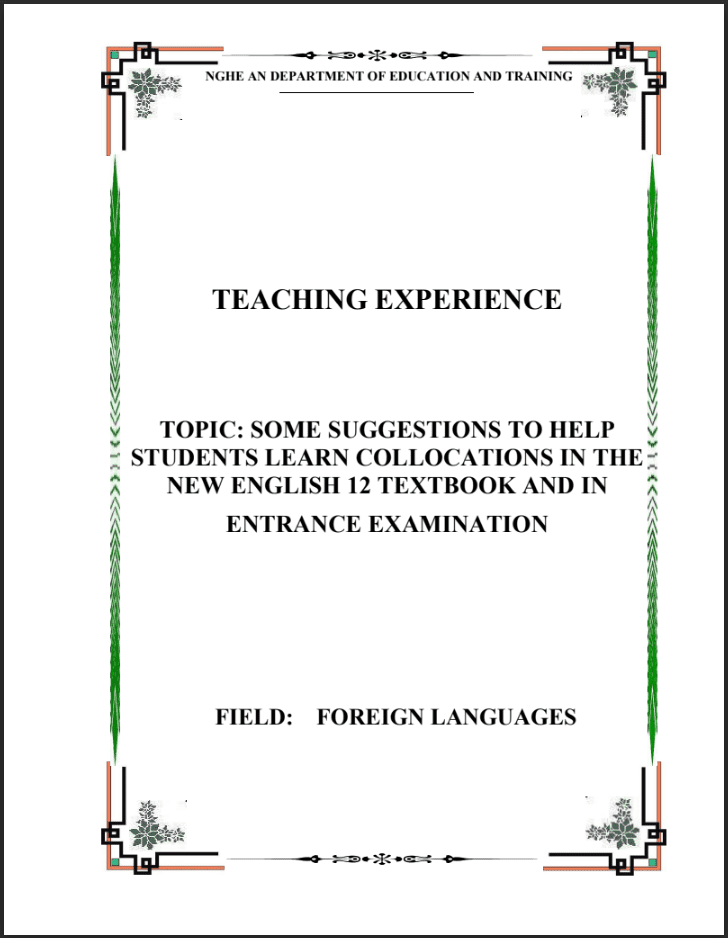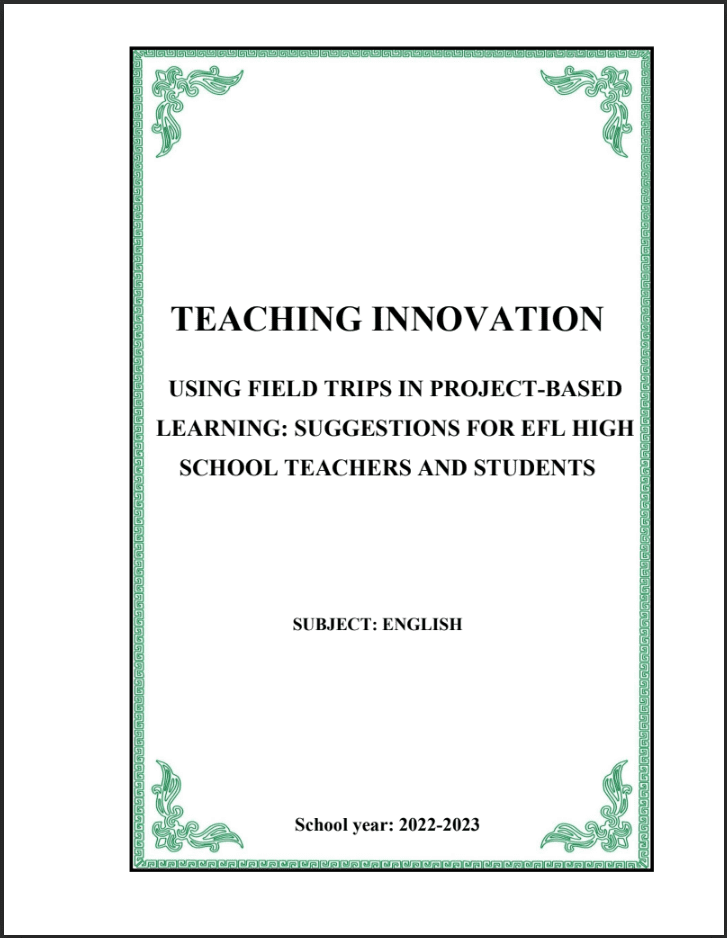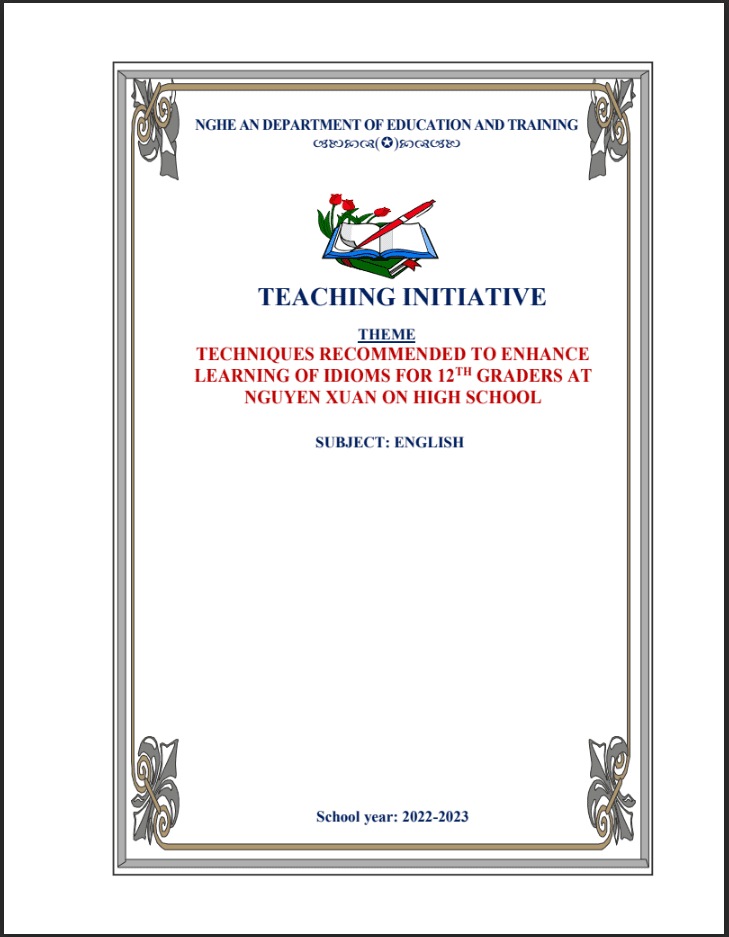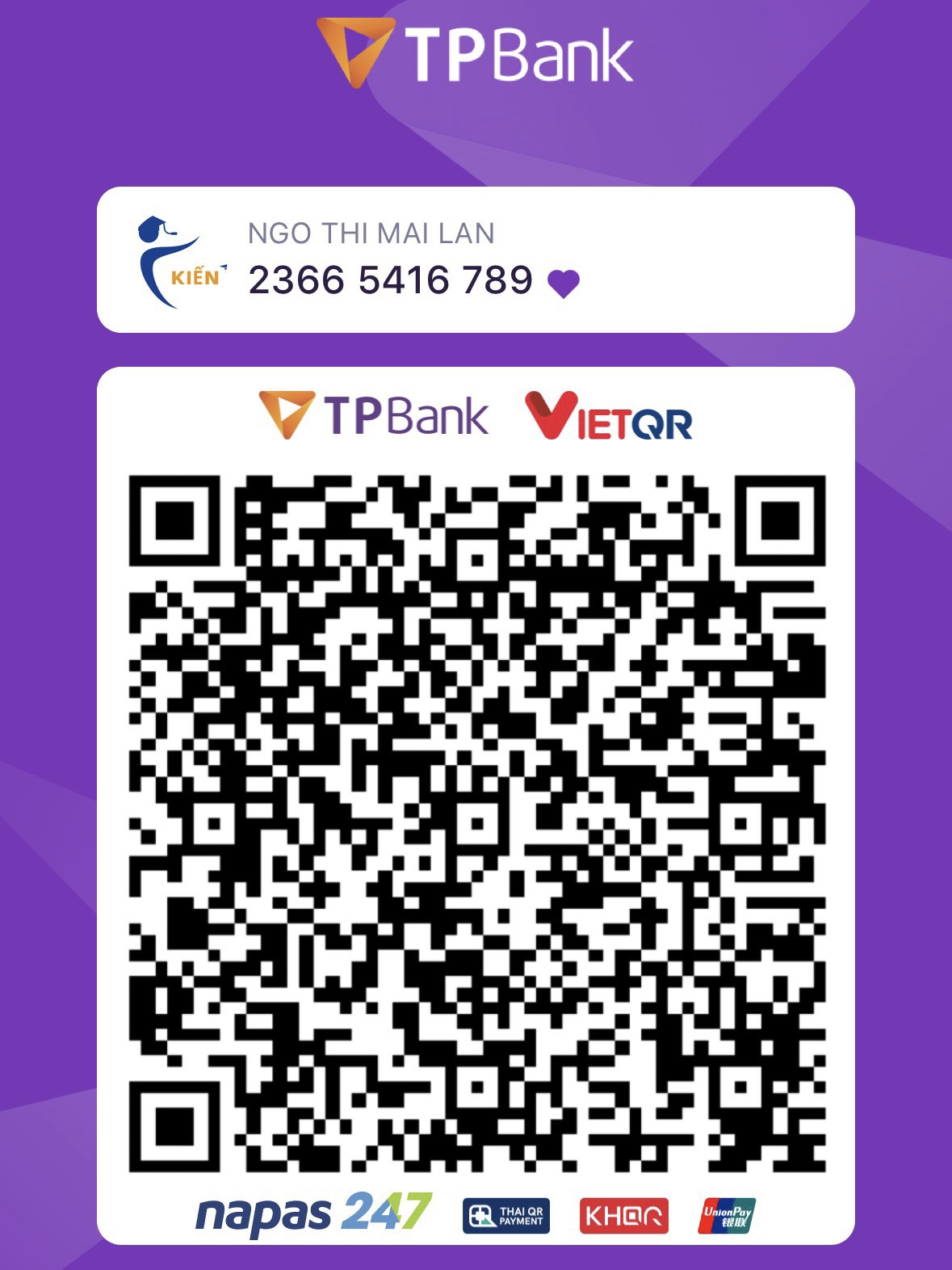SKKN Encouraging students’ seft-study in the COVID 19 epidemic through the website Gnomio.com
- Mã tài liệu: MP0040 Copy
| Môn: | Tiếng anh |
| Lớp: | 11 |
| Bộ sách: | |
| Lượt xem: | 692 |
| Lượt tải: | 8 |
| Số trang: | 49 |
| Tác giả: | Đặng Thị Dung |
| Trình độ chuyên môn: | Thạc sĩ giáo dục |
| Đơn vị công tác: | THPT Anh Sơn 2 |
| Năm viết: | 2021-2022 |
| Số trang: | 49 |
| Tác giả: | Đặng Thị Dung |
| Trình độ chuyên môn: | Thạc sĩ giáo dục |
| Đơn vị công tác: | THPT Anh Sơn 2 |
| Năm viết: | 2021-2022 |
Sáng kiến kinh nghiệm “SKKN Encouraging students’ seft-study in the COVID 19 epidemic through the website Gnomio.com“ triển khai gồm các biện pháp nổi bật sau:
teaching aids have a lot of good uses for language teaching and learning if they are carefully prepared and creative exploited in class. They can be simply listed as follows:
– The website https://www.hothuyduongthpt15.gnomio.com/ and make sure that students do not face with any problems
– Textbook
– Documents and exercises relating to the lessons posted on the website
– Computers or smartphone connected the Internet
Mô tả sản phẩm
PART A: INTRODUCTION
- Reasons for the study
The popularity of the Internet and computer technologies among young people as a whole has created serious grounds for the successful integration of ICT into education process. When teaching foreign languages as an important place is given to ICT, which allows the introduction of new technologies, new techniques, shifting the emphasis to the independent work of a student, making the trainer diverse. This situation increases the effectiveness of the classroom work and makes the independent work of student efficient. There is an opportunity to use the Internet as teaching tool both for training all types of speech activity, and for research work and education.
At the lessons of foreign language, one should integrate the linguistic, socialcultural and communicative approaches, taking into consideration teaching a foreign language for specific purposes. To achieve these goals, it is very important to use the whole potential of internet resources. The Internet offers users various options that can be use by students and teachers: email, participation in videoconferences, publication of research articles in the online system, numerous references catalogs and search system. ICT assumes the use of such telecommunication technologies as compute training and test programs, electronic dictionaries for teaching students both professional vocabulary and reading in a special setting; telecommunication technologies, which give the opportunity to participate in the dialogue of cultures through audio and video conferences. ICT combines the advantages of various technologies within a single resource placing educational material in the form of electronic textbooks, audio and video files using hyperlinks. Using ICT, a teacher has an opportunity to monitor the knowledge and skills of students in the network, making the learning process more individual.
Since its outbreak in late December 2019, COVID-19 has wreaked havoc across the world and like any critical sector, education has been hit hard. Students, schools, colleges and universities have been deeply impacted. While the Global Campaign for Education (GCE) acknowledges the public health decision to close schools, we believe that contingency plans should be in place to ensure the right to education even in times of crisis. GCE is convinced that all learners no matter where they live and circumstances have a right to education. Education is an essential right for children, young and adults in emergencies and must be a priority from the very beginning of any and all emergency responses.
From this fact, I decided to choose the topic: “Encouraging students’ seft- study in the COVID 19 epidemic through the website Gnomio.com” for my experienced innovation.
- Aims of the study
The aims of this study are:
- To maximize students’ studying effects at home when they are subjected to the interruption of going to school as usual. The site supports more materials and documents relating to the Units in grade 11th with a view to stimulating students’ positive attitude toward studying
- To partly help students to overcome the difficulties to conduct training in English more effectively, students are positive, more proactive when acquiring, comprehension is a form of lessons.
III. Methods of the study
- Draw from experience of my teaching.
- Consult many documents ,especially methods of study.
- Study colleagues’ experience
- Range of the study
The theme revolves around the issue of research, designed from some experience in teaching English 11 – Standard program to teach skills for students for the entire year in the period of COVID 19 expansion, particularly in the classes 11A1, 11A7 the academic year 2021- 2022.
- The new point of this experience
In my innovation, the site based on the database of Moodle.com which has been applied in the creation of e- learning website. The courses in my website is designed depending on my aims in teaching students. Particularly, in the period of Covid-19 pandemics, students need to self study more when they stay at home. The Gnomio.com helps to create environment for students to develop the ability of using language and self- consolidate their process of learning.
PART B: INVESTIGATION
- Theoretical background
- Theoretical basis
Self- study is a stance towards understanding the world. Scholarship in the social sciences has its basic human interaction and when one person studies an other, the self in relation to the other becomes a primary focus. In other words, in the social sciences we study ourselves in relationship to others and we seek to gain understanding in order to move ideas forward in specific settings like classroom or more general setting like education.
Following Meyer-Mork (2010), we employed self-study as a methodology uniquely suited to offer insights into the interactions that took place in coaching conversations carried out by Marcus (Author 1). Laura (Author 2), supported Marcus by serving as a critical friend and offering commentary on the self-study in an effort to examine Marcus’s coaching from different perspectives. We were able to reflect on the various ways these roles are designed to support novice teachers. Our findings indicate that the role of the coach subtly shifts based on the relationship with the teacher being coached, and more understanding is needed within the coaching literature to better parse the overlaps and differences based on role relationships.
1.1. What is self- study
Self-studying is a learning method where students direct their own studying outside the classroom and without direct supervision. Since students are able to take control of what (and how) they are learning, self-study can be a very valuable way for many students to learn.
Self-study and traditional classroom learning can be used together to help your child get the most out of his or her learning experience. Together, these methods help students learn and retain information better, helping boost comprehension, grades, and motivation.
2.2. The importance of self- study
Self-studying is a great method students can use to enhance their learning experience, whether they are studying for a course or learning about a topic for fun.
Using self-study, students are able to go beyond simply learning what their class textbooks and instructors teach them. By practicing self-study, they are encouraged to further explore topics they are interested in, developing stronger study skills as a result.
One of the major advantages of self-study is that students can take control over their own learning. And when students have the control, they become even more interested in learning.
1.3. ICT in education
Globalization and technological change processes that have accelerated in tandem over the past fifteen years have created a new global economy “powered by technology, fueled by information and driven by knowledge.” The emergence of this new global economy has serious implications for the nature and purpose of educational institutions. As the half-life of information continues to shrink and access to information continues to grow exponentially, schools cannot remain mere venues for the transmission of a prescribed set of information from teacher to student over a fixed period of time. Rather, schools must promote “learning to learn,” i.e., the acquisition of knowledge and skills that make possible continuous learning over the lifetime. “The illiterate of the 21st century,” according to futurist Alvin Toffler, “will not be those who cannot read and write, but those who cannot learn, unlearn, and relearn.”
Concerns over educational relevance and quality coexist with the imperative of expanding educational opportunities to those made most vulnerable by globalization developing countries in general; low-income groups, girls and women, and low-skilled workers in particular. Global changes also put pressure on all groups to constantly acquire and apply new skills. The International Labor Organization defines the requirements for education and training in the new global economy simply as “Basic Education for All”, “Core Work Skills for All” and “Lifelong Learning for All”.
- Real basis
The COVID-19 pandemic has also created an uncertain and stressful environment for both faculty and students. This has inevitably affected teaching and learning. Reported challenges to teaching and learning include the lack of inperson support, lack of communication and peer interaction, and the rapid upscaling of online technologies. Health professions education is more than simply the acquisition of knowledge and skills as it also includes learning within collaborative clinical workplaces. Face-to-face learning within these authentic clinical environments can help build confidence, improve communication skills, and foster team building and networking. The COVID-19 pandemic potentially places barriers on many of these aspects of teaching and learning. To reduce the spread of the virus many national governments have issued directives enforcing university, college, school and early childhood settings closures, or restricting grouping and social distancing practices whilst they remain open. Teachers across all sectors have significantly reconfigured their teaching and practices at very short notice.
TÀI LIỆU LIÊN QUAN
- 7
- 105
- 1
- [product_views]
- 5
- 173
- 2
- [product_views]
- 4
- 165
- 3
- [product_views]
- 4
- 129
- 4
- [product_views]
100.000 ₫
- 6
- 434
- 5
- [product_views]
100.000 ₫
- 2
- 507
- 6
- [product_views]
100.000 ₫
- 9
- 546
- 7
- [product_views]
100.000 ₫
- 4
- 409
- 8
- [product_views]
100.000 ₫
- 2
- 595
- 9
- [product_views]
100.000 ₫
- 0
- 538
- 10
- [product_views]

